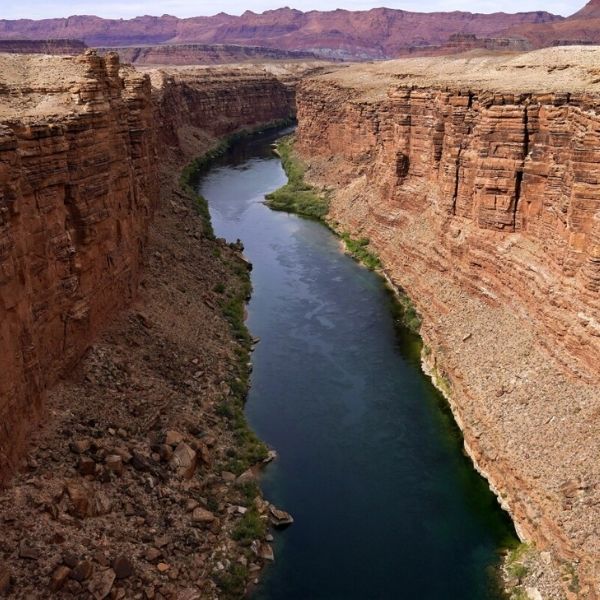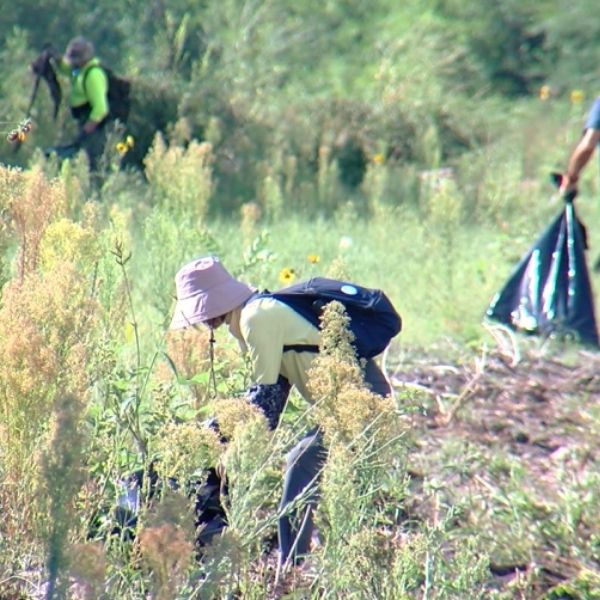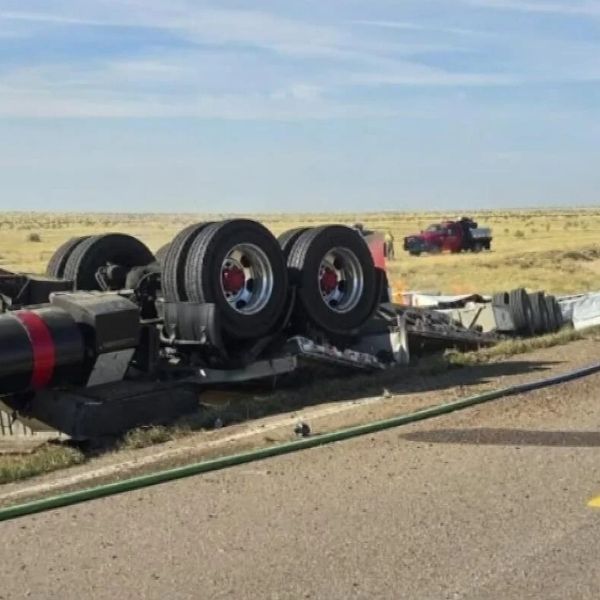Upper Basin states, including Colorado, avoid cuts for now despite worsening conditions
Experts say officials must prepare for bad — though not the worst — scenarios when managing the Colorado River Basin, which supplies water to 40 million people.
On Friday, the Bureau of Reclamation announced another year of water cuts for Arizona and Nevada, based on releases from Lake Mead in Nevada and Lake Powell on the Utah-Arizona border. California, the third Lower Basin state, faces no cuts in this round.
In the Upper Basin states — Colorado, New Mexico, Utah, and Wyoming — experts are monitoring reservoir releases with concern about water supplies, environmental needs, and the possibility of forced cuts.
“The reservoirs, the big ones Powell and Mead, are not only not going to recover, but they’re actually going to decline to pretty scary elevation levels,” said John Berggren, regional policy manager for Western Resource Advocates. “If we face another winter like the one we just got … you could be very quickly in a pretty dire place.”
The Bureau’s update came in its 24-Month Study, a regular report that tracks water conditions in the basin and how much flows into and out of federal reservoirs.
The August edition is critical: every August, officials forecast conditions for the following January and use those projections to decide how much water to store and release from reservoirs.
The report requires Arizona to cut 512,000 acre-feet — about 18% of its annual supply. Nevada must cut 21,000 acre-feet, or 7%, while Mexico faces a cut of 80,000 acre-feet, or 5%.
Lake Powell’s Jan. 1 elevation is projected at 3,538.47 feet — roughly 162 feet below full and 48 feet above the minimum to generate power.
That level sets up a planned release of 7.48 million acre-feet in the 2026 water year, running Oct. 1, 2025, through Sept. 30, 2026. Further reductions remain possible if conditions worsen.
The Bureau is managing a system under stress from drought and tense negotiations over Colorado River water sharing. Forecasts for inflows to Lake Powell and Lake Mead have dropped each month, and both reservoirs have recovered only slightly from the record lows of 2022.
This is also the last year under the 2007 rules, widely criticized for allowing the reservoirs to sink into crisis in 2022. Seven basin states, 30 tribal nations, and the federal government have fought for over two years about what new rules should look like when they take effect next August.
“If the states don’t get their shit together it’s a huge ‘hot mess,’” Berggren said when asked about the basin’s current state.
Meanwhile, Mexico and the U.S. are negotiating separately over water management after 2026.
Planning for the minimum
The Bureau projects three scenarios for the next two years — the most probable, maximum, and minimum outcomes.
The basin must focus on the minimum, said John Fleck, a former science journalist, author, and writer in residence at the Utton Center at the University of New Mexico School of Law.
He said the most-probable forecast is too optimistic, while the minimum projections have proven the most accurate in 2025.
This month’s minimum scenario showed 4.84 million acre-feet flowing into Lake Powell — only 50% of average.
The basin is moving into dangerous territory, Fleck warned.
“We need to be thinking closely about the risks of a very bad year and thinking about what we’re going to do in the case of a very, very bad year,” he said.
Officials and experts track reservoir levels as a savings buffer for people, economies, and ecosystems across the basin. That buffer has shrunk too much, Fleck said.
Reservoir levels also dictate dam operations. If Lake Powell falls below 3,490 feet, the Bureau can’t release water through the main outlets that generate hydroelectricity.
At that point, it would have to cut reliable, low-cost electricity to customers in several Western states and rely instead on lower outlets not built for long-term use.
The reservoirs aren’t yet at “dead pool” — when water can’t flow downstream at all — but the system is heading in the wrong direction.
“To the extent that we continue using water right now, at the rate that we’ve been using it, we run the risk of a catastrophic system crash that would require draconian deep water use cuts across the basin,” Fleck said.
Potential for forced water cuts in Colorado and other Upper Basin states
Communities in the Colorado River Basin also face the threat of forced water cuts.
A century ago, states negotiated the 1922 Colorado River Compact, which split the river between the Upper and Lower Basins. The Upper Basin can’t let the river’s 10-year flow drop below a certain threshold.
The two sides disagree on that number: the Lower Basin says it’s 82.5 million acre-feet on average, while the Upper Basin argues it’s 75 million.
Each year, Lake Powell’s release affects this rolling 10-year average. With this year’s 7.48 million acre-feet release, the average inches closer to 82.5 million.
By September 2026, that flow is projected at about 82.8 million acre-feet, according to Fleck and other experts Jack Schmidt and Eric Kuhn. That would still keep the Upper Basin just above the trigger.
If flows fall below the threshold, the Lower Basin could enforce the compact and demand cuts in upstream states — potentially within the next two years, Berggren said.
Such a “compact call” would spark a decade-long legal fight, cost hundreds of millions, and leave the river’s fate with the Supreme Court.
No one knows exactly how Colorado and other states would enforce such shortages, since it has never happened before.
Meanwhile, climate change keeps straining water supplies, and users — farmers, ranchers, industries, and communities — face uncertainty over how to share dwindling resources.
“We don’t know how the system would be managed if this ends up in the Supreme Court and we don’t have a post-2026 deal,” Berggren said.
This article has been carefully fact-checked by our editorial team to ensure accuracy and eliminate any misleading information. We are committed to maintaining the highest standards of integrity in our content.

Katie is a senior who has been on staff for three years. Her favorite type of stories to write is reviews and features. Katie’s favorite ice cream flavor is strawberry.















Leave a Reply